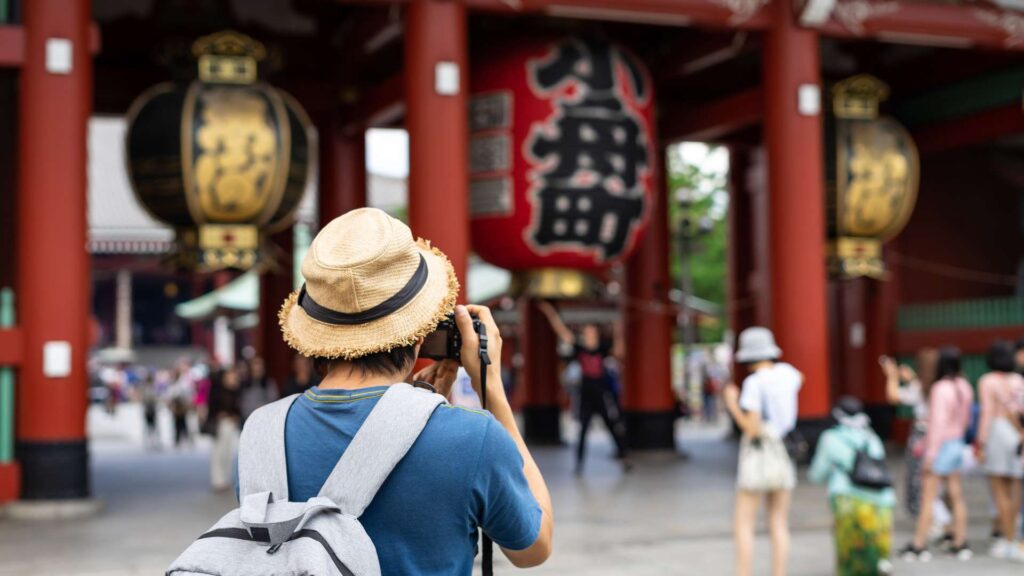Table of Contents
Planning a trip to Asian countries is considered affordable. But not Japan, one of Asia’s most expensive countries. You must thoroughly plan your trip to the Land of the Rising Sun. You can visit and explore hundreds of activities and places on this trip. This is why, to keep your trip under budget, you need to plan it with specifics.
This article is a thorough guide to saving for a Japan trip. It includes daily budget estimations, tips to save better, and an overall savings plan for a dreamy holiday. With planning and passionate efforts, you can visit Japan. How much should I save for a trip to Japan? Let’s dive in!
A trip to Japan can range from budget-friendly to luxury, depending on your preferences, travel season, and itinerary. This blog provides realistic cost estimates and information on how much you should plan to save.
The Importance of Budgeting for a Trip to Japan
Budgeting is about more than just saving; it is about where not to spend. You might have various subscriptions and services, and shop for things that you do not need. You can cut off such expenses and live a restricted life to achieve your savings goals quickly. Japan is a place of culture, and you need enough money to experience it properly.
You need to plan out specifics and work on saving according to your budget. Once you plan the details, you must start saving a small weekly fund. This might take a few months, but the more you save, the earlier you can plan the trip. With effective budgeting, planning, and saving, you can plan a trip to Japan and experience it yourself.
Estimating Daily Expenses: Accommodation, Food, and Activities
Estimating your daily expenses for a trip is an important step in planning your budget. To make it easier, let’s break down the main categories of accommodation, food, and activities, and estimate what you might spend per day based on different travel experiences.
1. Accommodation
- Budget Travel: $20 – $50 per night
- Hostel, shared dorms, or budget hotels.
- Basic amenities may include kitchen access for self-catering.
- Mid-Range Travel: $50 – $150 per night
- Private rooms in budget hotels, 2-3 star hotels, or private Airbnb rentals.
- Includes more amenities like private bathrooms, Wi-Fi, and sometimes breakfast.
- Luxury Travel: $150 – $400+ per night
- High-end hotels, resorts, or boutique stays.
- Luxury amenities, concierge service, high-end dining, pools, spas, etc.
2. Food
- Budget Travel: $10 – $25 per day
- Street food, local cafes, and self-catering by buying groceries and cooking.
- Limited dining in restaurants.
- Mid-Range Travel: $25 – $50 per day
- A mix of casual dining and occasional meals at mid-range restaurants.
- It might include occasional coffee shops or local eateries.
- Luxury Travel: $50 – $150+ per day
- Dining at upscale restaurants, fine dining experiences, or room service.
- It could also include special dietary needs or international cuisine at premium establishments.
3. Activities
- Budget Travel: $5 – $20 per day
- Free or low-cost activities like hiking, visiting public parks, museums with discounted entry fees, or walking tours.
- Explore cultural sites, local attractions, or free public events.
- Mid-Range Travel: $20 – $50 per day
- Day trips, guided tours, entry fees for popular attractions, and local excursions.
- Think of organized activities like museum visits, amusement parks, or cultural performances.
- Luxury Travel: $50 – $150+ per day
- Private tours, adventure experiences (like safaris and helicopter tours), tickets for shows, or exclusive events.
- Spa treatments, guided gourmet food tours, or VIP access to attractions.
Calculating Transportation Costs: Flights, Trains, and Local Travel
When it comes to planning for flight or train ticket bills, it is better to get them early. You can save a ton of money on travel costs. You need to get credit cards, travel coupons, and discounts to save more while buying tickets for your Japan vacation. Here is an estimation of your local travel costs. You must follow your daily budget to ensure you do not exceed it and lose money, so you must cut your trip short.
Estimating Local Travel Costs
- Public Transportation (Bus/Metro/Trams):
- Single Ride: $1 – $3 (in most cities)
- Day Pass: $5 – $15 (for unlimited travel in a day)
- Weekly Pass: $20 – $40 (for unlimited travel for 7 days)
- Taxis and Ride-Sharing (Uber, Lyft, etc.):
- Base Fare: $3 – $5
- Per Mile: $1 – $3
- Average Trip (within the city): $10 – $30
- Renting a Car:
- Budget: $20 – $40 per day (economy car)
- Mid-Range: $40 – $80 per day (standard car)
- Luxury: $80 – $200+ per day (SUV, convertible, etc.)
- Fuel: Expect $3 – $5 per gallon/liter depending on the country.
- Insurance: Typically $10 – $30 per day.

Planning for Unexpected Expenses and Emergencies
Most travel blogs provide budget and where-to-spend tips. However, you must be prepared for the unexpected. You cannot prepare for everything, but being financially prepared is essential. You should keep a few hundred dollars aside as an emergency budget to ensure that you have sufficient funds if you exceed your budget by a small amount.
You might plan and pray for everything to go as planned, but you must keep in mind that emergencies can happen at any time. This is why getting travel insurance is a must. Insurance might seem a bit expensive and excessive at first, but it will protect you from accidents, medical bills, or any other unforeseen circumstance.
Tips for Saving Money Before Your Trip
Saving money before a trip can make your travel experience more enjoyable and stress-free. Here are some practical tips to help you save:
- Estimate total expenses: Flight costs, accommodation, food, transportation, activities, and emergency funds.
- Break it Down by Category: Track your savings goal and how much you need to save per week or month.
- Plan Ahead: The earlier you start saving, the more you can spread out the costs.
- Avoid Last-Minute Expenses: Booking early often leads to cheaper flights, accommodations, and activities.
- Open a Travel Fund Account: Set up a separate account or envelope for travel funds to keep savings organized and less tempting to spend.
- Review Your Spending: Reduce impulse buys, dining out, subscriptions, and other non-essential items.
- Limit Coffee and Snacks: Small, daily purchases add up quickly. Brew coffee at home or pack snacks.
Utilizing Travel Rewards and Discounts
You might feel budget constraints every day for your vacation. But to get flexibility, you need to access travel rewards and discounts. You can use a credit card that offers miles to reduce flight tickets. Usually, a few-dollar discounts seem useless, but you must collect a few such offers to get a better one. You need to collect a few similar travel rewards and discounts and use them to keep your budget tight. You can also save some money by shopping for souvenirs or anything else you like while you travel.
Sample Budget Breakdown for Different Travel Styles
Having a sample budget breakdown to estimate your expenses is better when planning your Japan holiday. This breakdown will help you understand how much money will be enough to plan your flights, trains, or other costs. Here are some travel budget breakdowns you can take a look at. You need to make a similar, thorough, and detailed list of hotel, food, and drink costs to estimate the total expense for the trip.
Estimating Flight Costs
- Domestic Flights:
- Budget: $50 – $300 round-trip
- Mid-Range: $300 – $600 round-trip
- Luxury: $600 – $1,500+ round-trip
- International Flights:
- Budget: $200 – $600 round-trip (typically economy class)
- Mid-Range: $600 – $1,200 round-trip
- Luxury: $1,200 – $3,000+ round-trip (business or first-class)
Estimating Train Costs
- Short Domestic Routes (e.g., 1-3 hours):
- Budget: $10 – $30
- Mid-Range: $30 – $80
- Luxury/High-Speed: $80 – $150
- Long-Distance Routes (e.g., 6-12 hours):
- Budget: $40 – $100
- Mid-Range: $100 – $250
- Luxury: $250 – $500+
- High-Speed Trains (e.g., Shinkansen, Eurostar):
- Standard Seats: $50 – $200
- First-Class Seats: $200 – $500+
How Beem Can Help You Save Money for a Trip
Planning your Japan holiday requires massive money and savings over a few years. Beem helps you understand your payments better and save a larger sum with flexible strategies. With Beem, you can save and invest more efficiently and strategically to visit Japan as soon as possible.
Open a high-yield savings account with the personal finance app trusted by over 5 million Americans, and get up to 5% in annual percentage yield. Yes, you read that right. That’s up to 11 times the national average. Put your money to work and watch it grow. Your tomorrow will thank you.
Conclusion
Japan offers culture, deep family roots, and various food and festivals. However, to create unforgettable memories and experience the true essence of Japan, it is best to keep a flexible budget. You must also plan all the specifics and buy the flight tickets early to save money. Budgeting and planning are an art, and learning them might take a while.
Beem offers features to support budgeting, expense tracking, and savings goals, making saving easier. By allowing you to categorize expenses and set custom alerts, Beem helps keep you on track with your budget, ensuring you don’t overspend on unnecessary items. It also provides tailored tips for saving on family-related expenses, offering additional support for those preparing to travel to Japan. Download the app here.
FAQs for How Much Should I Save for a Trip to Japan
How much money should I save for a trip to Japan?
You need to save $5K for a two-week Japan holiday. You might need more money to experience a better stay, food, and culture.
What are the average daily expenses for traveling in Japan?
Japan is cheaper for local transportation, but food is quite expensive. To experience Japan properly, you might need a daily budget of $300 or more.
How can I save money on flights to Japan?
You must book flights to Japan early and use credit card miles to get better discounts. You must use websites offering better flight ticket deals to save money.
What are some budget-friendly travel tips for Japan?
You must have an emergency fund while traveling to any foreign land. Also, you must spend less on food and drinks and more on tourism and activities.
How do I plan for unexpected expenses while traveling?
You can create an emergency fund for crises. You should also separate a few hundred dollars while traveling to pay for unexpected expenses.
















































